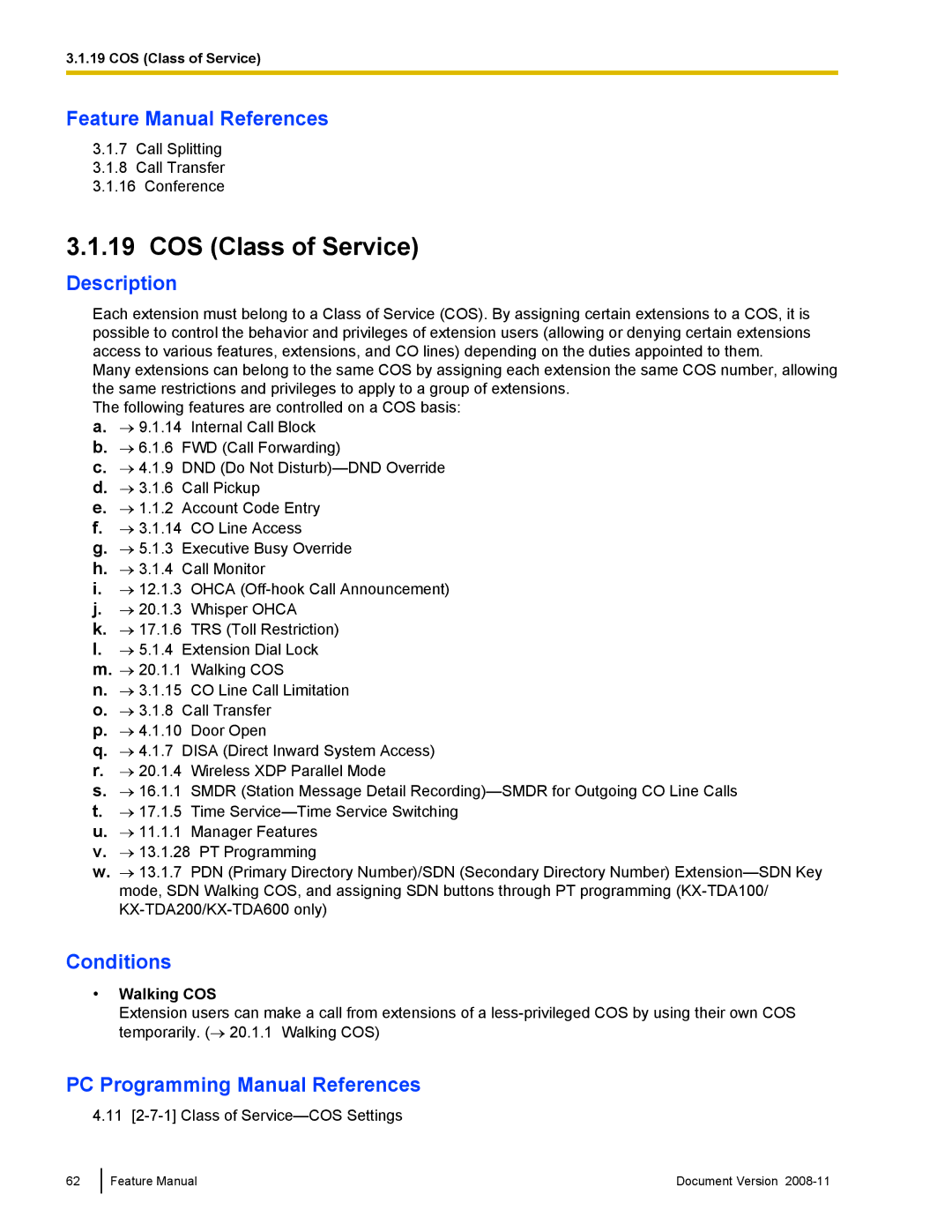
3.1.19 COS (Class of Service)
Feature Manual References
3.1.7Call Splitting
3.1.8Call Transfer
3.1.16Conference
3.1.19 COS (Class of Service)
Description
Each extension must belong to a Class of Service (COS). By assigning certain extensions to a COS, it is possible to control the behavior and privileges of extension users (allowing or denying certain extensions access to various features, extensions, and CO lines) depending on the duties appointed to them.
Many extensions can belong to the same COS by assigning each extension the same COS number, allowing the same restrictions and privileges to apply to a group of extensions.
The following features are controlled on a COS basis:
a.→ 9.1.14 Internal Call Block
b.→ 6.1.6 FWD (Call Forwarding)
c.→ 4.1.9 DND (Do Not
d.→ 3.1.6 Call Pickup
e.→ 1.1.2 Account Code Entry
f.→ 3.1.14 CO Line Access
g.→ 5.1.3 Executive Busy Override
h.→ 3.1.4 Call Monitor
i.→ 12.1.3 OHCA
j.→ 20.1.3 Whisper OHCA
k.→ 17.1.6 TRS (Toll Restriction)
l.→ 5.1.4 Extension Dial Lock
m.→ 20.1.1 Walking COS
n.→ 3.1.15 CO Line Call Limitation
o.→ 3.1.8 Call Transfer
p.→ 4.1.10 Door Open
q.→ 4.1.7 DISA (Direct Inward System Access)
r.→ 20.1.4 Wireless XDP Parallel Mode
s.→ 16.1.1 SMDR (Station Message Detail
t.→ 17.1.5 Time
u.→ 11.1.1 Manager Features
v.→ 13.1.28 PT Programming
w.→ 13.1.7 PDN (Primary Directory Number)/SDN (Secondary Directory Number)
Conditions
•Walking COS
Extension users can make a call from extensions of a
PC Programming Manual References
4.11
62
Feature Manual | Document Version |
